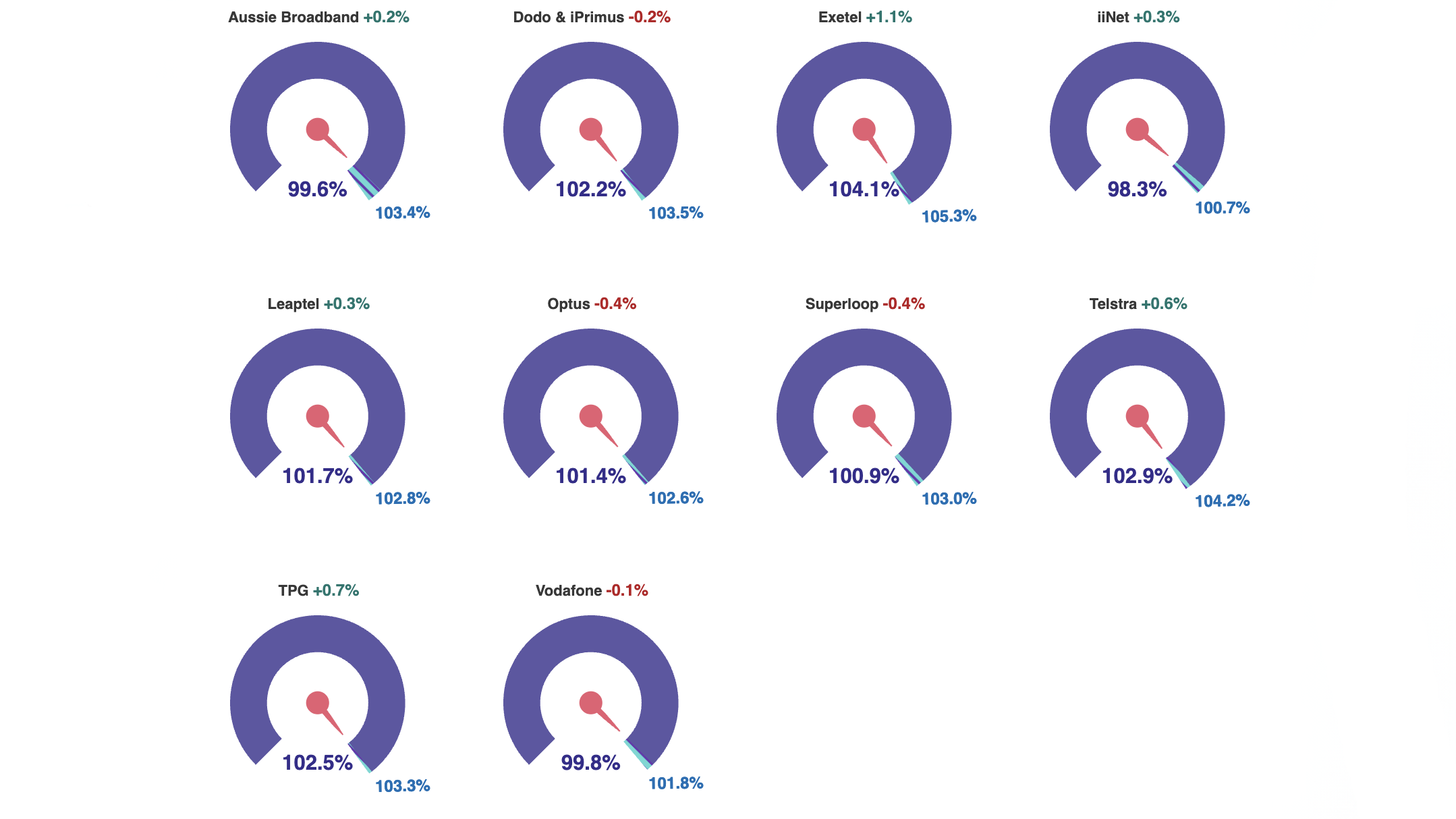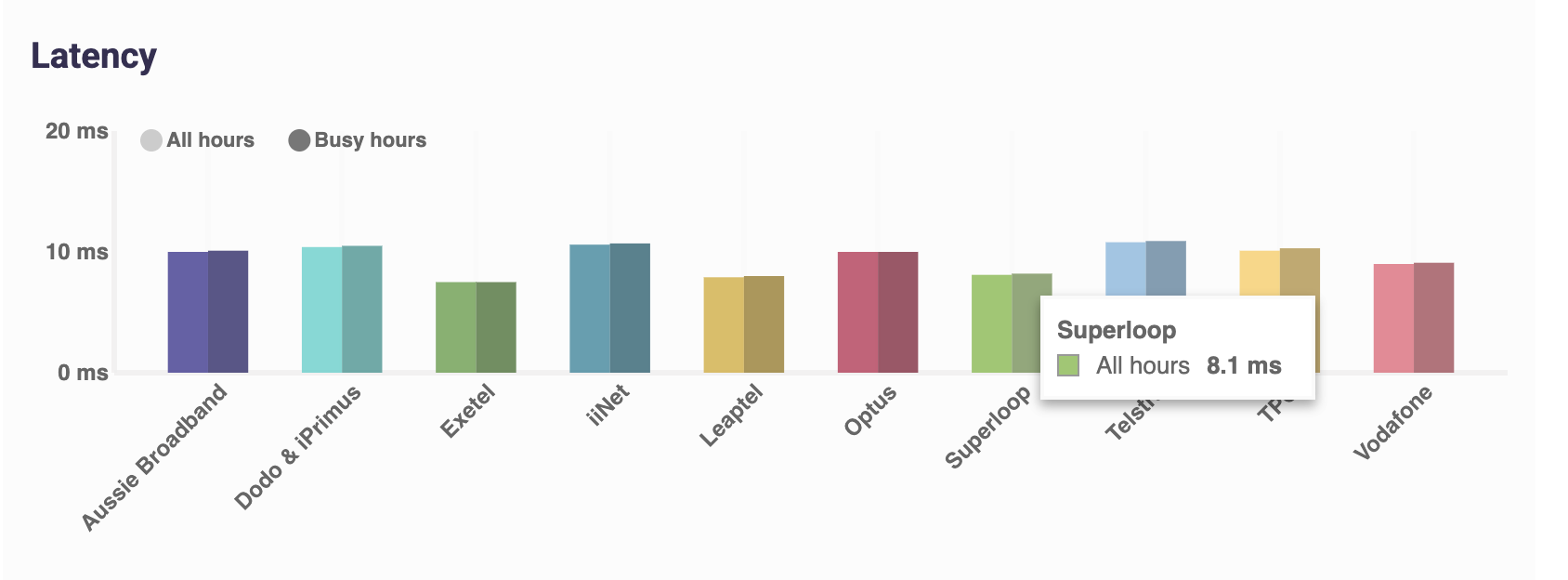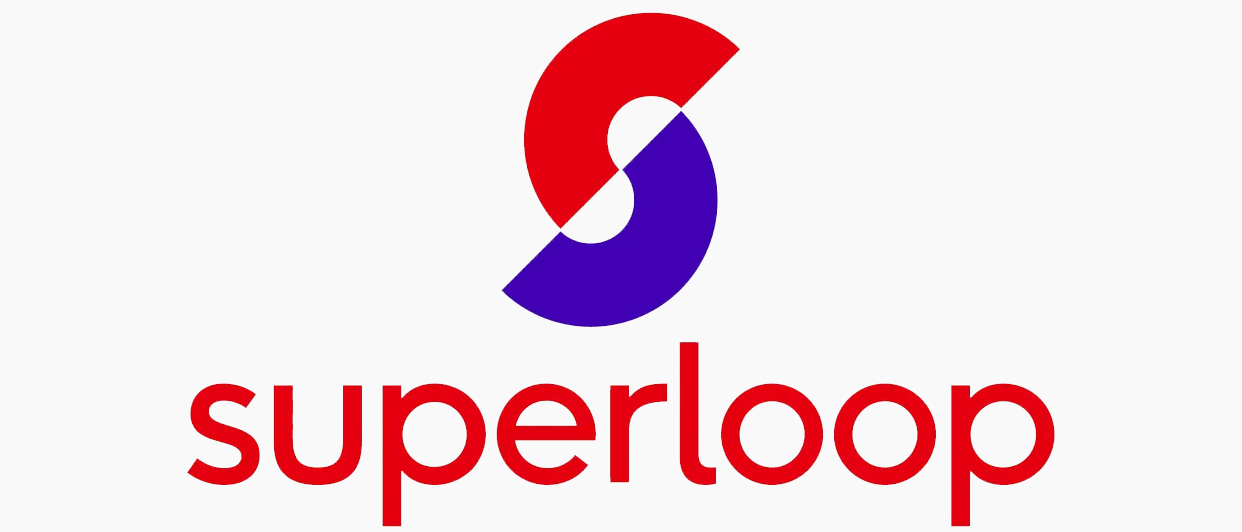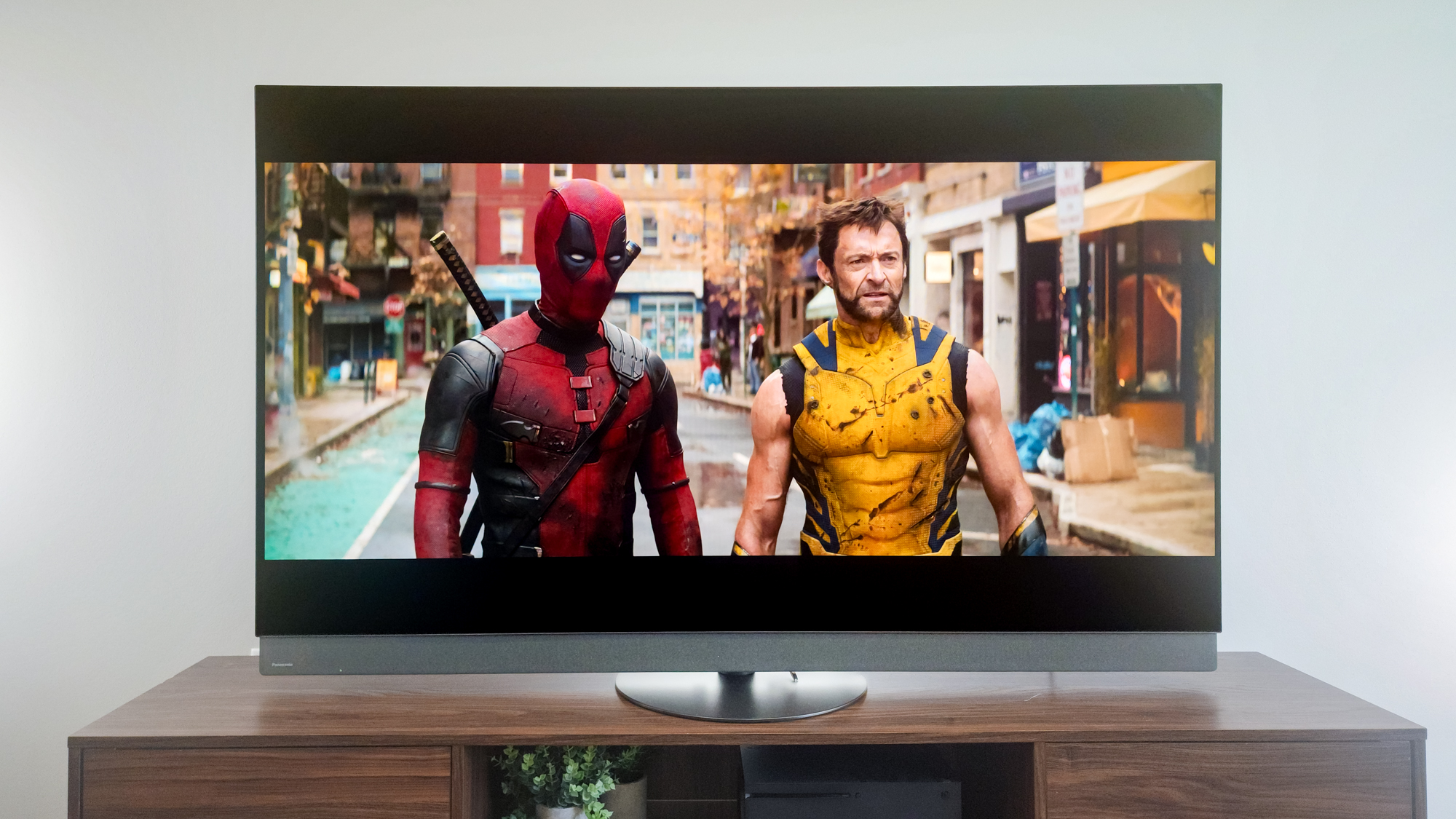Tom's Guide Verdict
Australian-owned Superloop presents itself as a commendable choice if you're looking for a new NBN provider. Its plans are on par with, or cheaper than, the national monthly average, and it's been found to deliver on its promised advertised speeds in the Australian Competition and Consumer Commission’s (ACCC) broadband monitoring. Superloop has also been found to deliver low latency times, making it potentially a great option for online gamers. It also does pretty well in terms of reaching theoretical maximum download speeds, now advertising a massive 860Mbps for its Ultrafast speed tier — especially during the busy evening hours. Based on customer reviews, it's apparent that Superloop's customer support could do with some improvement. Whilst we have deducted key points for this, it's fair to say it's not alone in this regard, as other telcos also fall short in this area.
Pros
- +
Well-priced NBN plans
- +
Low latency could be good for gamers
- +
Fast speeds
Cons
- -
Customer support needs improvement
Why you can trust Tom's Guide
If you’re looking for an extensive review into NBN newcomer Superloop, then look no further. Superloop was founded in 2014, and has quickly become a household name for cheap and reliable NBN plans.
This achievement isn’t a result of clever marketing, but rather, a highly rated service combining affordability and stability, with a sprinkle of seriously fast speeds. It’s also known as a great option for online gamers, with several customers praising its low latency, but we’ll get to that in greater detail later on.
So, if you’re currently signed up to one of Australia’s big three telcos — Telstra, Optus or TPG — and feel you’re paying too much for spotty service, or you’ve given another smaller telco a go but want to switch, then perhaps Superloop can present itself as the best option for you.
Latest Superloop deals
Superloop Review: Plans
- Basic II (NBN 25) to Ultrafast (NBN 1000)
- Ultrafast tier delivers some of the fastest speeds in Australia
Superloop offers NBN plans from the Basic II tier (NBN 25) through to the Ultrafast (NBN 1000). In early 2024, Superloop's Ultrafast tier was configured to 1000/50, with theoretical maximum speeds of 700Mbps (and typical evening speeds of 700Mbps). Previously, this plan was advertised as reaching theoretical maximum speeds of just 600Mbps, but it is now offering 860Mbps.
As for Superloop’s other NBN plans, the telco quotes 25Mbps and 50Mbps typical evening speeds for NBN 25 and NBN 50, respectively. Superloop also advertises max speeds for its NBN 100 and NBN 250 tier.
Superloop’s complete lineup of NBN plans with their typical evening speeds and regular monthly pricing are as follows:
- NBN 25: AU$72p/m (Typical evening speed 25Mbps)
- NBN 50: AU$85p/m (Typical evening speed 50Mbps)
- NBN 100: AU$95p/m (Typical evening speed 100Mbps)
- NBN 250: AU$104p/m (Typical evening speed 250Mbps)
- NBN 1000: AU$109p/m (Typical evening speed 860Mbps)
Superloop Review: Speeds
- 860Mbps typical evening speeds on Ultrafast tier
- Positive data regarding actual download speeds recorded by the ACCC
- My Speed Boost feature boosts speed to the next available tier
As we mentioned earlier, Superloop has updated its advertised typical evening speed figure on its Ultrafast tier since we first published this review in early 2023. The telco now advertises 860Mbps typical evening speeds, placing it in a much higher position within Australia's NBN landscape.
Get instant access to breaking news, the hottest reviews, great deals and helpful tips.
Only three telcos have it beat, and they're Aussie Broadband, Buddy Telco and Flip. Most providers on the Ultrafast tier advertise between 650Mbps and 850Mbps, so it's a positive that Superloop is higher among the ranks.
Advertised speeds are only one side of the coin, though. If you want to find out what speeds you can reasonably expect if you were to sign up, it’s best to turn to data published by the ACCC. The ACCC has included Superloop in its quarterly Measuring Broadband report, most recently published in March 2025, which gives a good indication as to how well the telco performs in the real world.

Superloop was found to deliver 101.3% of advertised plan speeds during all hours and 100.9% during the busy hours of 7pm–11pm. While other providers were found to have performed at 100% or more, including Optus, Leaptel and Exetel (which is owned by Superloop), the figures collected for Superloop are still overwhelmingly positive.
They tell us that you are likely to receive a consistently reliable service, although do remember that Superloop’s advertised plan speeds during the busy evening hours are below the theoretical maximum, so you may indeed only get these marginally slower speeds, and not experience the full potential of the speed tier you’re on.
But, the ace up Superloop’s sleeve is its My Speed Boost feature. This works in the exact same way as it does on Exetel, in that you can temporarily boost the speed of your service to the next tier (as long as your connection type supports it) for free, five times a month.
For example, if you sign up for an NBN 50 plan, then you will be able to boost to an NBN 100 plan, with theoretical maximum speeds of 100Mbps (double that of the plan you’re paying for) for free.
If you don’t use all five free days in a month, they can rollover into a bank which holds up to a maximum of 30 days. You can also purchase extra days for AU$2 each.
You won’t be able to boost an NBN 100 plan to NBN 250, or NBN 250 to NBN 1000, if you don’t have a fibre-to-the-premises (FTTP) or a hybrid fibre coaxial (HFC) connection. Only these two support the high speed tiers.
Superloop Review: Cost
- Pricing below national average across all NBN plans
- Six month introductory pricing across all plans
- Multiple optional modems available
Where we feel Superloop does redeem itself slightly is in how much it charges for its NBN plans. They’re not the cheapest NBN plans out there, but they’re far from the most expensive and we do think they are well-priced.
As is the case across much of the NBN landscape, Superloop offers six-month introductory discounts on all of its plans, and the amount you can save during this period fluctuates depending on which speed tier you’re looking at. At present, you can save anywhere from AU$84 (on NBN 100/40, 1000) over the six months up to AU$120 (on NBN 50, 100), for example.
We believe a good indication of an NBN provider’s affordability is to compare its regular monthly price with the average, which we’ve calculated using pricing data obtained from WhistleOut. Superloop’s regular monthly pricing after introductory discounts, compared to the monthly average, is as follows:
Average monthly prices correct at time of publishing.
- NBN 25: Average monthly cost — AU$70.89. Superloop monthly cost — AU$72
- NBN 50: Average monthly cost — AU$84.45. Superloop monthly cost — AU$85
- NBN 100: Average monthly cost — AU$92.01. Superloop monthly cost — AU$95
- NBN 250: Average monthly cost — AU$105.66. Superloop monthly cost — AU$104
- NBN 1000: Average monthly cost — AU$118.38. Superloop monthly cost — AU$109
From these figures we can see that Superloop undercuts the monthly average on all occasions, and in some cases by quite a margin. The NBN 250 and NBN 1000 plans represent particularly good value, for instance.
When it comes to adding a preconfigured modem to your Superloop NBN plan, you’re given a range of options depending on the connection type you have. If you have anything other than a fibre-to-the-building (FTTB), then you can opt for an Amazon eero 6+ for free (and just pay AU$20 for shipping).
The eero 6+ is only free if you remain connected to Superloop for 24 months. If you leave before, then you’ll be asked to pay AU$8 for each unused month. Other NBN providers, including Optus and Vodafone, also employ a device payment plan for their modems, but you need to stay connected for longer — 36 months and 24 months, respectively, in this case — so we can’t say anything negative about Superloop’s interpretation.
If you connect to the NBN via FTTB, however, then you only have the option of the ZTE H1600 modem, along with the option to add a Wi-Fi extender to improve network coverage around your home.
Superloop Review: Reliability
- Generally reliable service
- Customer support receives a mixed-reception in relation to outages
So far, we’ve covered all bases when it comes to advertised download speeds and what you could reasonably expect, but it’s just as vital to assess how reliable your NBN service will be (and if it could suffer from outages or if the connection is pretty stable).
The ACCC once again comes to the rescue here, as it publishes data relating to just that. In its most recent report published in March 2025, Superloop was found to suffer 0.13 outages at least once a day on average. And when compared to other providers, Superloop recorded 28.7% of units having no outages and ranked fifth out of the 10 providers analysed. At the top of the list is Telstra, with 0.05 outages per day.
In terms of customer service and ratings, Superloop has an average of 3.9 out of 5 stars across 2,693 reviews. Customers have rated the telco's customer service quite highly, with 3.8 stars out of 5. Most customers found that the telco was able to expedite and solve connection problems with ease, assist with moving queries and navigate them through troubleshooting steps efficiently.
Superloop Review: Data caps
As with the majority of NBN providers, all Superloop NBN plans come with unlimited data included as standard. So far, the only NBN provider we’ve found that may place a data cap on its plans is Aussie Broadband, as part of its ‘Build Your Own Plan’ service.
Superloop Review: Gaming
- Positive online reviews for its gaming credentials
- Lowest recorded latency by the ACCC
Superloop doesn’t explicitly advertise itself as an NBN provider for online gaming, but throughout our time investigating various telcos in Australia, it often gets brought up in the conversation of best internet gaming plans.
Much of the positive chatter across forums online refer to Superloop’s low latency times, and routing to international gaming servers (mostly those in Asia). Some users have mentioned that if the gaming servers you intend to connect to are in Oceania, then Aussie Broadband may be a safer bet.
With regards to the latency you can expect to experience when connected to Superloop, we can use data published by the ACCC from its latest Measuring Broadband Australia report, published in March 2025. All data relating to latency was collected in December 2024.

Of the 11 telcos tested during the analysed period, Superloop returned numbers of 8.1ms during all hours and 8.2ms during the busy hours of 7pm–11pm. Exetel — which is now owned by Superloop — came in lowest with 7.5ms across all hours and 7.5ms during the busy hours.
However, these figures are merely a guideline, because more often than not, where you live in Australia can affect your online gaming experience. For example, what may be a great NBN provider for a household in a major city won’t necessarily be the same for a household in a regional (or rural) area.
Ultimately, it’s challenging to determine the “best” internet service provider for gaming, as there are several factors at play. However, Superloop does tend to receive largely positive reviews by online gamers in forums, we feel we can suggest you to give it a go. Much like other ISPs, Superloop plans work on no lock-in contracts, so you can chop and change NBN providers if it doesn’t work out for you.
Superloop Review: Extra features
Superloop doesn’t just provide a range of well-priced NBN plans, it also has a few other extra features up its sleeve to entice you to join its service.
My Speed Boost
Along with Exetel (which Superloop now owns) Superloop has a feature called My Speed Boost. This allows customers on NBN plans to temporarily boost the speed of their service to the next available tier, for 24 hours. For example, if you’re on an NBN 50 plan, with theoretical maximum download speeds of 50Mbps, you will be able to boost to an NBN 100 plan, with maximum speeds of 100Mbps.
Customers get five free My Speed Boost days each month, and these can be banked up to a total of 30 days. So you could technically end up with an entire month’s worth of boosted speeds. If you want or need any more than five My Speed Boost days during a month, you can purchase extras for AU$2 each.
Customers on NBN 25 plans can use My Speed Boost days, but this speed tier doesn’t come with any for free. If you want to boost the speed to the 50Mbps tier, each day will need to be purchased at AU$2 each.
Only customers with fibre-to-the-premises (FTTP) and select customers with hybrid fibre coaxial (HFC) connections can boost their download speed if they’re on an NBN 100 or NBN 250 plan (to NBN 250 and NBN 1000). This is because only these two connection types can support the Superfast (250Mbps) and Ultrafast (1,000Mbps) speeds.
Refer a friend
Superloop also incentivises current customers to encourage friends and family to join the service too, by providing a referral bonus for each person they successfully manage to sign up.
For each person a current Superloop customer gets to sign up to an NBN plan, they will receive a 10% discount (worth up to AU$10p/m) on their own plan, which is applied to the following month’s bill.
The person being referred to Superloop will need to sign up and pay their first month’s plan fee in order for you to receive the 10% discount. If you manage to get 10 people to sign up, that’s 100% off your next bill.
Bundle and save
Alongside its NBN plans, Superloop also provides mobile phone plans, which use the Telstra mobile network. If you already have a Superloop NBN plan and you take out a mobile plan too, you will receive a monthly discount on the NBN plan.
You can add up to a total of five additional services — across mobile, broadband and monthly home phone call packs — to your NBN plan, allowing you to save up to AU$15p/m on your initial NBN plan.
Superloop Review: Cancellation and hidden costs
- 30 day notice period required
- Must call to cancel
Throughout our time researching different NBN providers in Australia, one area that regularly generates some controversy is what to do if you want to cancel your plan. To be frank, no telco appears to make it an easy process. Superloop can certainly be included in this conversation, based on customer feedback we’ve seen online, both in forums and online review websites.
Superloop’s official cancellation policy states you “may cancel your service at any time by giving Superloop thirty days’ notice (including if you do not wish to continue to use your service during the notice period).”
Many users online aren’t fans of the 30 days notice period, although Superloop isn’t alone in asking for this. A good majority of customers have found that they believe they have cancelled their service (albeit eventually after finally being connected to a representative) but continue to be billed. This then segues into more generalised issues with customer support, which we’ll discuss more in the section below.
We have found online from customer reviews that you need to call Superloop if you want to cancel your service. It can’t be done via email, live chat or your online account. We’ve also seen that there is a direct cancellation line, which isn’t listed on the Superloop website. Other customers have found that they will call the generic customer support line and then have to wait for long periods of time to be transferred from agent to agent.
As we said, Superloop isn’t alone in this regard (Exetel, perhaps unsurprisingly, also receives a bad rep when it comes to leaving a plan) so it’s hard to single it out as being poor. Ultimately, virtually all telcos need to do better and make it easier for customers to leave a plan if they wish.
Superloop Review: Reputation
The NBN service itself from Superloop appears to be a good one on paper. Speeds are good and reliable and it’s well-regarded with the online community when it comes to gaming. But what about if you ever need technical or customer support? Well, this is where things appear to turn a little more sour.
Looking at review sites Product Review and Trustpilot, it’s a real mixed bag as to what customers think of their service. On Product Review, there are currently 2,693 reviews for Superloop at the time of writing. Opinion is just as mixed on Trustpilot, too.
But of course, there are also accounts from customers who have experienced the exact opposite. Many customers also say the speeds they get are as advertised or even in some cases, even exceed their expectations.
It’s for these reasons that, as we tend to say with any online customer review, to take it with a pinch of salt, as your personal experience with an ISP could be entirely different to someone else’s.
Superloop Review: Verdict
Based on our research, we feel we can recommend Superloop as an NBN provider, whether you’re looking to switch your current one or you’re moving into a new property and wish to get connected.
Monthly prices are either on par or below the monthly average at the time of writing, and on the whole, it appears that you will indeed achieve the speeds of whichever plan you choose. It even comes well-recommended as an option for online gamers, which isn’t something that can be said of all ISPs.
There do appear to be some issues relating to customer support and in particular, cancelling your service, but the hope would be that you wouldn’t need to cancel in the first place. If you’re tempted to sign up to Superloop to be your next NBN provider, then we’d recommend taking a deeper dive into the cancellation process, just in case you want to.
As it works on a no contract basis and has six-month introductory pricing, we’d suggest signing up for those first six months, and being prepared to know what to do to switch providers.
On the whole, however, it's super stuff from Superloop.

Max is a digital content writer for Tom’s Guide in Australia, where he covers all things internet-related, including NBN and the emerging alternatives, along with audio and visual products such as headphones and TVs. Max started his career in his homeland of England, where he spent time working for What Hi-Fi? and Pocket-lint, before moving to Australia in 2018.
- Lucy ScottingStaff Writer
You must confirm your public display name before commenting
Please logout and then login again, you will then be prompted to enter your display name.

